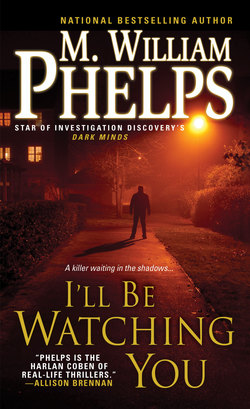Читать книгу I'll Be Watching You - M. William Phelps - Страница 17
На сайте Литреса книга снята с продажи.
7
ОглавлениеI
Mary Ellen Renard made it through what for many might have been the most volatile part of adulthood, and somehow managed to escape with her life. Sure, divorce, physical and emotional abuse, a witness to the sickness of alcoholism and its repercussions, weren’t things to celebrate. There was likely going to be a lifetime of therapy in her future.
Contemplation. Medication. Nightmares.
Yes. Midnight screams. Awake, asleep.
Up and down.
Tossing and turning.
But for the most part, Mary Ellen—along with her two daughters, after seventeen years of living with a man she described as “intermittently violent”—had left him and made it out into the world on her own. That was something to commemorate, indeed. A major accomplishment. She wasn’t running. Or hiding. Mary Ellen was leaving.
That first apartment, Mary Ellen said, after living in Ringwood, New Jersey, with him, had been an old construction office shanty at one time, she found out months after moving in. There had been a drought in New Jersey when she and the kids rented it. When the drought ended and the rains came, so did the water. Leaking directly above her bed.
But looking back, Mary Ellen agreed it was nothing compared to the violence and chaos she and the girls had left behind.
Walking out of that house wasn’t easy. After all, it was two months after she was married, in 1963, that he had started hitting her, and didn’t stop until 1980 when she left. After two kids and more beatings, she believed she could tame him. Love was going to get them through, she convinced herself. “I never considered,” she said, “leaving. It wasn’t something you did then. I truly believed that when you loved someone enough, you could overcome any problem.”
Growing up Catholic didn’t help, Mary Ellen insisted. Having a priest for a brother made divorce sacrilegious. “Yes, we went to church religiously,” she said, laughing at the pun.
In fact, when Mary Ellen went to see her mother one night after her husband hit the kids for the first time, pleading with her, telling her the only option she had was to get rid of the bastard, Mary Ellen’s mother looked at her with conviction and said, “You’re a Catholic. There is no divorce.”
Mary Ellen understood, but it didn’t make it any easier. She thought maybe that if she confided in her mother, the woman might feel differently. But instead, “That is your cross to bear,” her mother said. “And you bear it.”
Mary Ellen accepted her mother’s answer. “Look at my mother’s crosses to bear,” she recalled. “She was like the Rock of Gibraltar. I mean, nothing would stop her.”
II
During the 1950s, north of Newark, west of White Plains, Fair Lawn, New Jersey, enjoyed one of its greatest periods of growth. By the 1960s, Fair Lawn would soar fourfold, from a meager nine thousand residents to almost forty thousand, in twenty years.
Working farms dominated the landscape. “We were like farm kids,” Mary Ellen said. By example, Mary Ellen’s parents taught their four children that living through hard times was never an excuse for a life of poverty. The American dream was theirs, if only they wanted it bad enough. Her dad, who hadn’t made it past the eighth grade, went on to become an industrial engineer.
Mary Ellen was born in 1942. The first house she recalled living in with her three siblings was a modest cape-style ranch. She grew up as a tomboy in one sense, but a girly girl in another. With Mom home all day, she fell into the same reclusive life her mother had known for decades. “My mom was always home. Today it might be called agoraphobia. She never left the house.”
It wasn’t only the confines of being a wife and mother molded from the 1950s social class of stay-at-home moms that kept Mom cooped up. The family had a rare disease, which saddled most of them. Mom was a bleeder, not a hemophiliac, but had a disease of the veins known as hereditary hemorrhagic telangiectasia (HHT), which, according to the University of Michigan, is “a disorder of the small and medium sized arteries of the body.” Primarily affecting four organ systems of the body—lungs, brain, nose, and gastrointestinal (stomach, intestines, or bowel) system—the “affected arteries either have an abnormal structure causing increased thinness or an abnormal direct connection with veins (arteriovenous malformation).” It was not uncommon for Mary Ellen to return from school and find her mother on the kitchen floor in a pool of blood. Her oldest memory of her mother, in fact, contains ghastly images of walking in the door with her book bag in one hand and a smile on her face, only to find her mom struggling to get up off the floor after the veins in her legs had burst open like a dry-rotted garden hose.
“All of my siblings have the symptoms.” Luckily, the gene skipped over Mary Ellen. “No one knew what was wrong with my mother until many years later. Doctors actually took photographs of her for medical books.”
